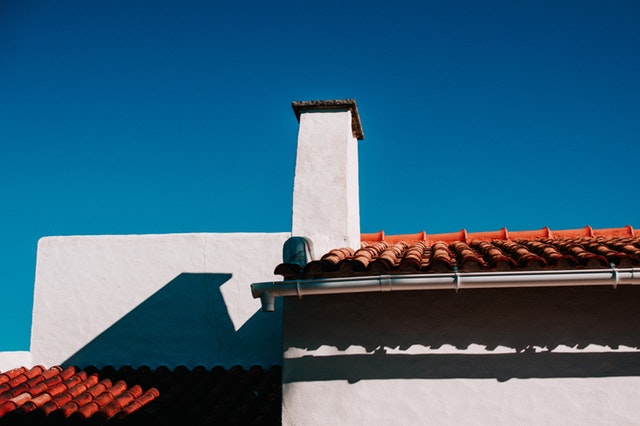Most Fire-Resistant Roofing Materials - What’s Best?
Discover the most fire-resistant roofing materials. Learn which types offer the best protection for your home in fire-prone areas.
Your home’s roof has a significant role to play in ensuring you and your family are safe and comfortable. In addition to features such as durability and stain resistance, it’s important to make sure your roofing material is fireproof. So, what is the most fire resistant roofing material?

What Is the Most Fire Resistant Roofing Material?
In this post, we’ll discuss the different types of roofing materials and their respective fire resistance properties. Understanding the fireproof qualities of various roofing materials helps you to make a more informed decision.
The Importance of Fire Safety
Your roof is a large exposed area that’s prone to acts of nature and is prone to accidents. Depending on where you live, wildfires are a real possibility. Even if there is no real danger of wildfires, there are other potential dangers to be aware of, especially during the summer. Some common circumstances to bear in mind include:
- Sparks from a nearby house fire
- Bonfire or barbeque embers
- Chimney sparks
- Fireworks
- Lightning strikes
What Does It Mean to Have A Fireproof Roof?
All materials, including those used for roofing, are categorized according to their relative fire resistance. As such, there are standardized ratings or categories to describe a material’s flammability. These ratings are based on characteristics such as:
- The degree that the roofing material forms embers
- How the flame spreads over the surface of the roof
- How the flame spreads from the outside of the roofing material and into the underlying attic
Class A
This is the highest fireproof rating a material can earn, which means Class A materials are the least flammable.
Class B
These materials are effective against moderate surface fires.
Class C
These materials are effective against light surface fires. They’re the most flammable.
How Safe are Common Roofing Materials?
If your roof was repaired or built by a reputable contractor then you shouldn’t be too worried about fire safety. Contractors are required to follow very strict rules, especially when it comes to the techniques and materials they’re required to use.
The most fire-safe materials include fiberglass-based shingles, concrete tiles, and clay and slate tiles. Pressure-treated shingles are less safe while the most unsafe materials include untreated wood shingles and plywood.
Fiberglass-Based Asphalt Shingles
These are by far the most cost-effective and most popular roofing materials. When combined with a fiberglass underlayment, the roofing structure becomes even more resistant to fire, earning a Class A rating.
Clay Tiles
When it comes to fire resistance, clay tiles have proven to be one of the safest roofing options. Clay easily dissipates heat and resists flames. When properly installed, they can also achieve a Class A rating for fire resistance.
Slate Tiles
Slate is a natural material, and like clay, it’s inherently fire resistant. When properly installed, slate tiles will also achieve a Class A fire rating.
Pressure-Treated Wood Shingles
While wood shingles offer aesthetic appeal, they pose more of a fire risk than other materials. The safety of the roof depends on how the roof is maintained and installed.
Bottom Line
Your home’s roof is a huge investment and that’s why it’s important to know what is the most fire resistant roofing material. Understanding the basics of fire safety, the risk and the different types of roofing materials out there ultimately helps you to make the right choice for your roofing material. If you’re still unsure of which roofing material to go with, the experts at Durafoam Roofing have the experience and knowledge to help you choose the ideal roof for your residential roofing project.
Real People. Real Stories.
Our clients are our highest priority, and we’re always excited to receive positive feedback. If you're thinking of working with Durafoam Roofing, we invite you to explore our reviews from satisfied customers to see the exceptional service and quality you can expect from us.

HIGHLY RECOMMEND! The scheduling was easy, I had a crew working on replacing my foam roof within a couple of weeks. The roof was removed quickly and safely. The new roof looks immaculate! Thank you, Durafoam!

I recently had to contact Durafoam as a person that inherited their warranty from the past owner of our home. I was impressed with how friendly, responsive and reasonable they were about addressing my concern. The complete opposite of what I rehearsed in my head before calling. What a refreshing change to find conscientious, integrity in the roofing world!

My patio roof was in bad shape and in real need of a do over. The tile area close to my fireplace chimney was loosening a bit and i was worried if i would see my roof leaking on a wet day. Durafoam sealed up my patio pretty well last year and i have not had any issues till now. Duane Forstie was my point of contact sales and he was prompt enough to come and inspect the roof 1 year later. I would recommend Durafoam to anybody looking to get their patio fixed and sealed for long term.

Within a day of requesting a quote, Duane showed up on time and could not have been more helpful and patient with all of my questions. I received a quote by email within an hour of his visit and a personal call to thank me for giving him a chance to assist in our project. No pressure, just genuine appreciation for the potential business. Typically I get two estimates for work like this....but this time I cancelled the second appointment as it was clearly unnecessary to look further.

Someone else told me I needed $1000s of work done. I called Durafoam and found out the only problem was a bee hive blocking a scupper. The guy who came out cleared the scupper and told me I just needed to caulk around it. So glad I called them.

Durafoam did a fantastic job on my new construction house. No leaks and the roof looks amazing! Highly recommend

There price was very fair and they did a really good job. They come back every year to check and repair if needed and that's included for 5 years.

Excellent job. You guys have a very respectful team of installers. Thank you for your services Tim.
Discover how our expert roofing services can enhance the value and protection of your home with a personalized estimate today.
